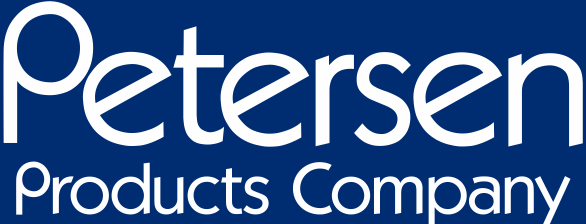Articles

Pipeline isolation is essential to safe and efficient maintenance, testing, and repair activities. Isolating portions allows work to be conducted without impacting the entire system or risking personnel safety. There are various pipeline isolation methods available tailored specifically for different applications and pipeline circumstances - these will depend on factors like pipeline size, pressure and type of work being completed for efficient and secure operations.
Pipeline Isolation: Purpose...
Flanges are indispensable parts of piping systems, providing leak-free connections that enable safe movement of liquids and gases. Comparing weld neck vs slip on flanges shows their different features which best match specific applications.
Weld neck flanges are strong and long-term connections designed for high pressure systems with their secure butt-welded attachment, while slip-on flanges offer simpler installation and more cost-effective pricing, making them suitable for lower pressure applications...
Instructional video showing most of the steps involved in installing a Petersen PeteStop® Line Stop 129-Series into a pipeline that has already had a Hot Tap performed.
Manhole and underground utility testing are critical for ensuring the safety and reliability of municipal sewer and water systems. Regular testing helps to avoid costly repairs and service disruptions by identifying any leaks or weaknesses early on.
Vacuum testing is a reliable and cost-effective method for detecting issues such as infiltration and exfiltration in manholes. It provides a faster and easier alternative to standard water testing. Vacuum testing allows cities to detect leaks and structural...
Inflatable seals and containment solutions are integral for reliable pipe sealing in various industrial applications, including maintenance, repair, and testing. Specifically designed inflatable seals offer flexibility and endurance - adapting to various pipe sizes and configurations making them the ideal solution for use across many different industries.
Why choose Inflatable Sealing Solutions over Traditional Ones?
Inflatable seals have several advantages that make them ideal for many industrial...
Water flow control is an integral aspect of both plumbing and industrial operations. It involves controlling both flow and pressure of water for maximum performance and safety in any given system. Good flow management practices are necessary for several reasons - including minimizing leakage, water loss reduction and increasing overall system efficiency.
Plumbing flow control ensures consistent water pressure for fixtures and appliances to operate properly, as well as minimizing overflows or backups...
Hydrostatic testing is an invaluable way to assess the strength and integrity of pressured systems, guaranteeing they can meet operational demands without fail. Hydrostatic testing can be used to evaluate pipes, tanks, or vessels by filling them up with water under pressure before applying pressure in order to detect leaks or problems that might exist within these items.
Hydrostatic pressure testing is essential in multiple industries, from plumbing to industrial pipelines. Hydrostatic testing helps...
Proper sewer and drain maintenance is vital to the effective operation of any plumbing system - be it residential or industrial. Overlooking these essential services could result in serious blockages, backups, or costly repairs - regular maintenance helps avoid these issues and ensures water flows freely through the system.
Effective drain and sewer cleaning tools play a pivotal role in maintaining these systems, from identifying blockages to clearing them away to prolonging infrastructure's lifespan...
Pipeline leaks can result in costly downtime, environmental degradation and operational inefficiencies in both plumbing systems and industrial pipelines. Effective leak repair and pipeline isolation techniques are vital to ensure the safety, working condition and longevity of any pipeline network - be it a small domestic water line or large industrial system transporting gas or chemicals.
Inflatable and mechanical pipe plugs offer versatile and reliable solutions to this challenge, with inflatable...
Flooding can cause significant damage to properties, infrastructure, and the environment, leading to costly repairs and prolonged disruptions. Proper flood control techniques are essential in protecting assets and maintaining safety during heavy rainfall events or sudden snowmelt events; our emergency flood control solutions aim to reduce their effects while simultaneously offering rapid response capabilities should an emergency arise.
Understanding the Challenges of Flood Control
Flood management...
Heavy lifting and material handling are necessary components of industrial operations to keep business running smoothly, and being able to safely handle heavy loads increases productivity while decreasing risks such as accidents and injuries. Businesses may use appropriate lifting solutions for expediting processes, protecting worker safety, optimizing resource usage and contributing to an environment which fosters sustainable results in the workplace.
Challenges in Heavy Lifting and Material Handling...
VIDEO - "Replace a Valve Under Pressure using Petersen® 126-Series Inflatable Pipe Plug".
Gas line safety is crucial in industrial settings to ensure facilities operate safely and efficiently. Industrial gas lines, which are used in various industries such as manufacturing, energy, and utilities, must be examined and maintained on a regular basis to avoid costly and harmful leaks or system failures. The gas line pressure test is an important part of this safety routine because it detects leaks or structural problems before they become a challenge.
A pressure test of a gas line involves...
Maintaining pipeline safety and reliability is crucial in organizations such as oil, gas, and water delivery. Regular inspections and tests are necessary to avoid leaks, failures, and environmental risks. Pipeline Hydrostatic testing is one of the top techniques of ensuring the safety of the piping systems.
Hydrostatic pipeline testing, often known as pipeline pressure testing, is a procedure for ensuring the integrity of pipelines before they are put into service. This test confirms the pipeline's...
Line stopping is an important technique in pipeline maintenance that allows you to repair or modify a pipeline without shutting it down. There are two primary types: inflatable and mechanical line stops.
It works by temporarily closing off a segment of the pipeline, allowing professionals to safely complete critical tasks without disturbing operations. There are two major types of line stopping: inflatable and mechanical.
In this article, we'll go over the key differences between inflatable and...
Bypass plugs are commonly used for monitoring, testing, and repairing pipelines in waterworks, sewer and plumbing systems, oil and gas infrastructure, chemical industries, and more. They are designed to isolate a section of the pipeline temporarily while still allowing the fluid or gas to flow through. The primary advantage to using a bypass plug for pipeline testing, maintenance, or repair is that you don’t have to shut down the system or completely stop the flow during the project.
When to use...
Sewer lines frequently experience significant issues, such as clogs, leaks, and degradation, which can result in costly repairs and inconveniences. Traditional repair methods usually require digging up and replacing damaged pipes, which may be costly and time-consuming.
Sewer pipe lining is a modern, efficient option for sewer repair. This method involves installing a new lining into existing pipes to successfully restore their functionality without the need for major excavation. Sewer pipe lining...
Maintaining clear and efficient water pipes is essential in commercial settings, where purging water lines regularly helps prevent issues like air pockets and sediment buildup, which can lead to low water pressure and even system failure.
Why Pipe Purging is Essential for Commercial and Industrial Water Systems?
Pipe purging is crucial for ensuring the efficiency and lifespan of commercial and industrial water systems. One of its key advantages is that it prevents air blockages, which can create...
Cleaning pipelines is critical to make sure industrial processes run smoothly and safely. Pipelines may accumulate debris over time, reducing flow efficiency, increasing downtime, and posing possible safety risks.
Regular pipeline cleaning ensures optimal performance, prevents clogs, and extends the pipeline's lifespan. Neglecting this maintenance can lead to costly disruptions and major safety hazards, therefore routine pipeline cleaning is necessary for smooth industrial operations.
How to Determine...
Early detection of plumbing leaks is essential to avoid expensive repairs and significant water damage. Traditionally, plumbers have used various methods to identify leaks, including visual inspections, pressure tests, and even listening devices. These techniques, while effective to some extent, can sometimes miss small or hidden leaks that could cause problems later.
Enhancing plumbing leak detection procedures hands down revolves around smoke testing. Not only does smoke testing find leaks that...
Efficient drainage systems are crucial for smooth industrial & commercial operations. When drain lines get clogged, they can slow down productivity, create safety risks, and increase operational costs. A clogged drain line can lead to serious problems in any industrial facility from halting production lines to creating unsafe working conditions, the consequences can be costly and disruptive.
In this article, we'll explore the most common reasons for these clogs and provide effective strategies to...
Hot tapping is a method of connecting to a pipeline without depressurizing or removing it from service to make repairs, conduct maintenance, or add a new section of pipe. Hot tapping can be dangerous if not handled the correct way, and it’s very important to understand the conditions of the line, before you begin the process.
The basics of hot tapping
To perform a line stop, line intervention or line isolation via hot tapping, first install a fitting (nozzle, nozzle with repad, non-pressure retaining...
Problem:
Lametti & Sons, Inc. has been rehabilitating pipelines and sewers since 1953, and they are CIPP experts. But that doesn’t mean every project is completed without a hitch. “Very cold soil on a 14,000 foot interceptor rehabilitation in southwest Minneapolis caused a ‘soft spot’ near the middle of a run,” explains Project Manager Ross Larson. “It only happens a dozen or so times a year, but when it does, we’re in danger of losing the whole lining.” These soft spots are places where the lining...
View a step-by-step valve replacement job done by BC Solutions using the PeteStop® inflatable line stop and bypass. Photos and description.
The PeteStop® inflatable line stop systems are easy to install and remove while allowing you to insert pipe plugs under difficult conditions. It is perfect for situations where:
- the pipe is out-of-round or contains debris
- you have to block a pipeline without depressurizing it
- you have a limited budget
- a mechanical seal would put too much pressure on the pipe wall
- you need a smaller tap hole
- the job needs to be done as quick as possible
- you have limited space to do the line stop
Petersen Products®...
A U.S. based facility needed contingency equipment added to an existing chill water system, requiring the addition of block valves to be added in new chillers and generators. The chill water system operates at 30 PSI and 45° F, with managed flow of service through 14” and 16” carbon steel pipe.
Out of the 93% of Americans that planned to spring clean in 2022, 92% said they were considering taking action to reduce their environmental impact while doing so, according to a Bona and Harris Poll survey of over 2,000 U.S. adults. Furthermore, more than half 56% said they were considering the use of cleaning products that have environmentally friendly ingredients. For those who wish to lessen their environmental impact when addressing a clogged drain, there are several eco-friendly avenues...
Mechanical pipe plugs are essential devices for pipeline maintenance. They temporarily seal or isolate sections of pipelines making the flow more accurate and controlled. Additionally, they are referred to as mechanical pipe stoppers, pipe bungs, pipe test plugs, and line stops as well.
When it comes to stopping flow in a pipeline, there are several different pipe plug options available to you. Which one you choose will depend on a variety of factors, including the type of substance you’re blocking, how much pressure there is, how you’re accessing the inside of the pipeline, how long you’re blocking the pipeline, and your purpose for stopping flow in the first place.
In this article, we’re discussing which type of pipe plug is best for different applications, so you ensure you...



